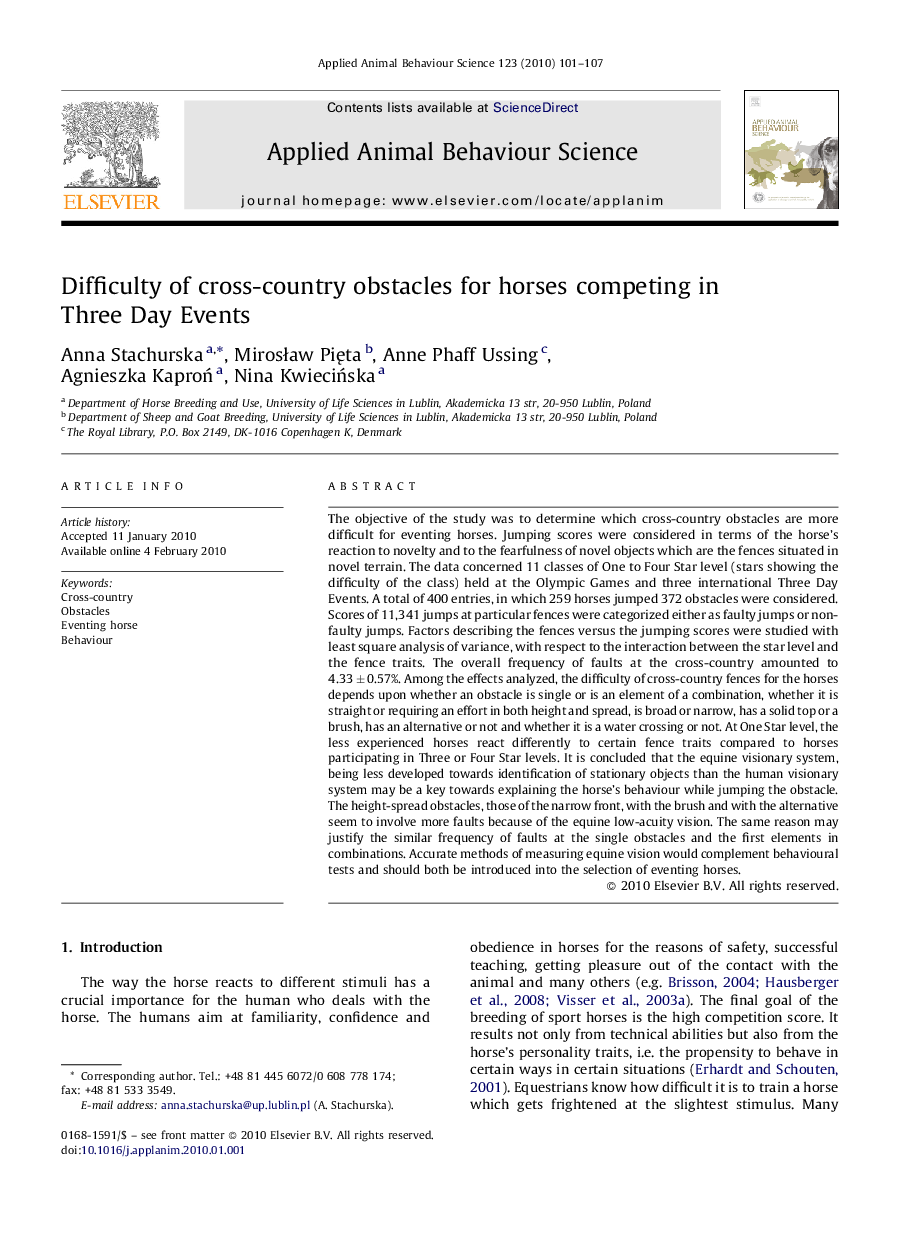| کد مقاله | کد نشریه | سال انتشار | مقاله انگلیسی | نسخه تمام متن |
|---|---|---|---|---|
| 4523397 | 1625402 | 2010 | 7 صفحه PDF | دانلود رایگان |

The objective of the study was to determine which cross-country obstacles are more difficult for eventing horses. Jumping scores were considered in terms of the horse's reaction to novelty and to the fearfulness of novel objects which are the fences situated in novel terrain. The data concerned 11 classes of One to Four Star level (stars showing the difficulty of the class) held at the Olympic Games and three international Three Day Events. A total of 400 entries, in which 259 horses jumped 372 obstacles were considered. Scores of 11,341 jumps at particular fences were categorized either as faulty jumps or non-faulty jumps. Factors describing the fences versus the jumping scores were studied with least square analysis of variance, with respect to the interaction between the star level and the fence traits. The overall frequency of faults at the cross-country amounted to 4.33 ± 0.57%. Among the effects analyzed, the difficulty of cross-country fences for the horses depends upon whether an obstacle is single or is an element of a combination, whether it is straight or requiring an effort in both height and spread, is broad or narrow, has a solid top or a brush, has an alternative or not and whether it is a water crossing or not. At One Star level, the less experienced horses react differently to certain fence traits compared to horses participating in Three or Four Star levels. It is concluded that the equine visionary system, being less developed towards identification of stationary objects than the human visionary system may be a key towards explaining the horse's behaviour while jumping the obstacle. The height-spread obstacles, those of the narrow front, with the brush and with the alternative seem to involve more faults because of the equine low-acuity vision. The same reason may justify the similar frequency of faults at the single obstacles and the first elements in combinations. Accurate methods of measuring equine vision would complement behavioural tests and should both be introduced into the selection of eventing horses.
Journal: Applied Animal Behaviour Science - Volume 123, Issues 3–4, March 2010, Pages 101–107